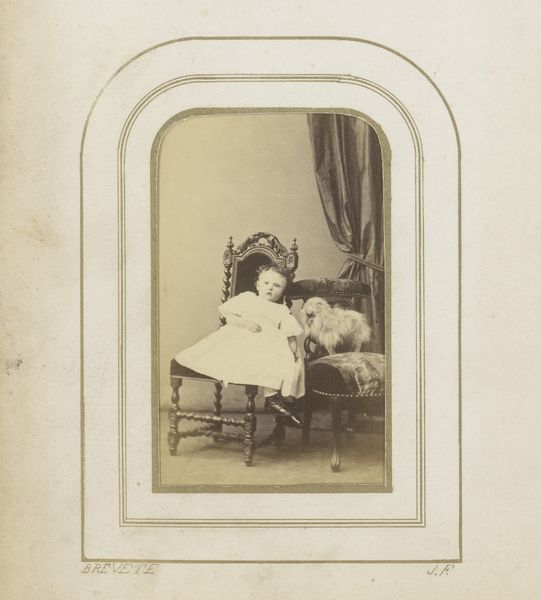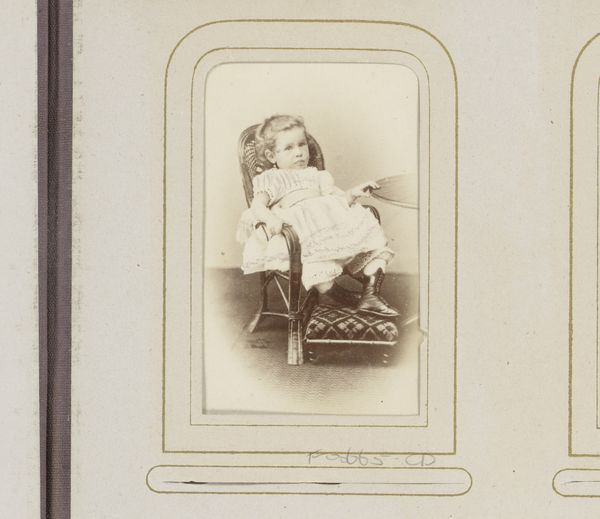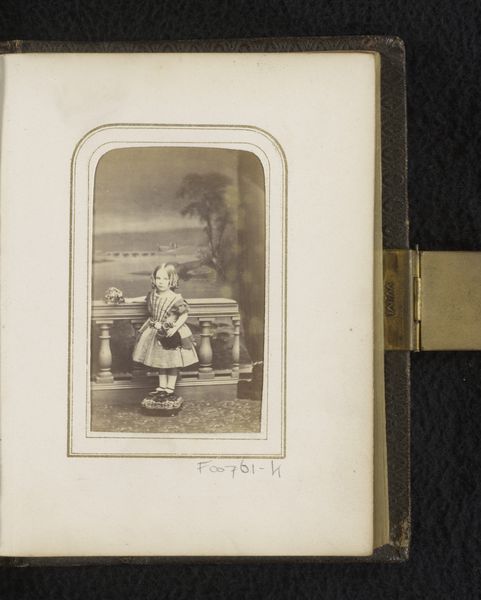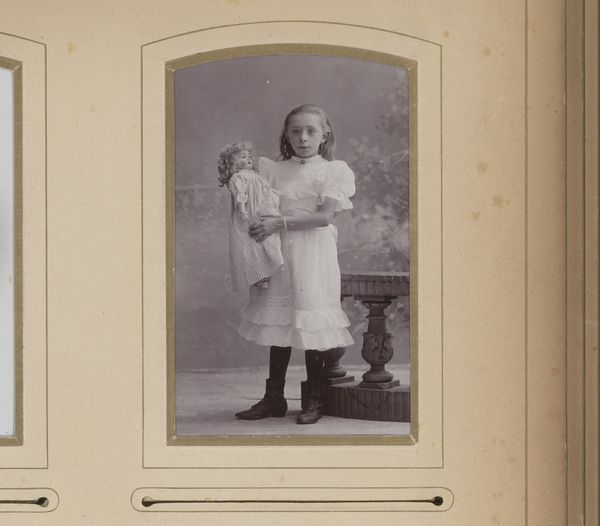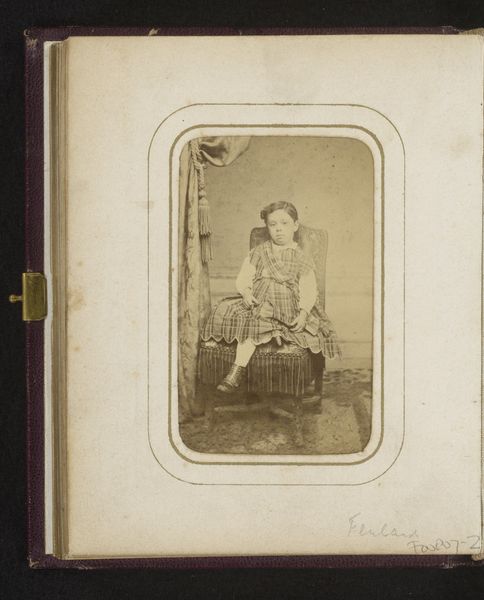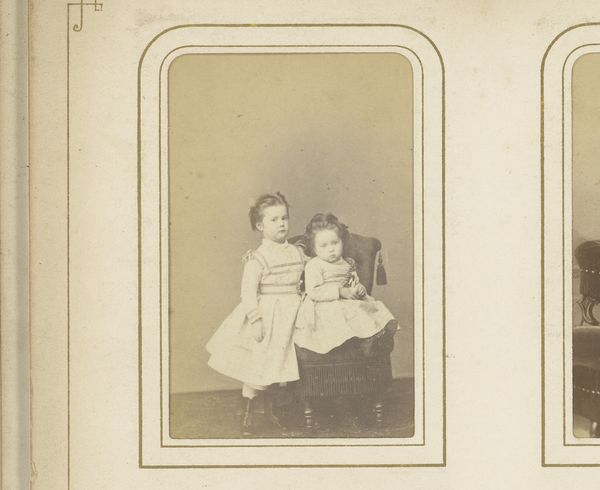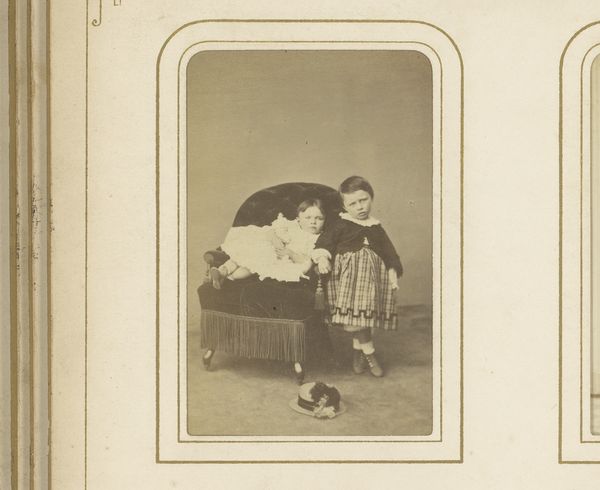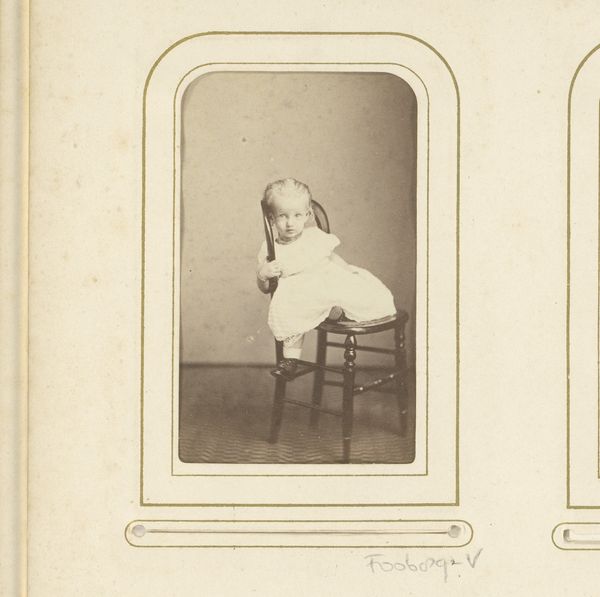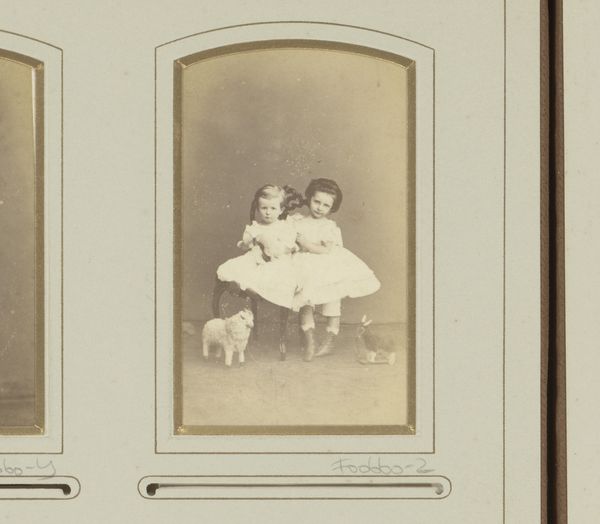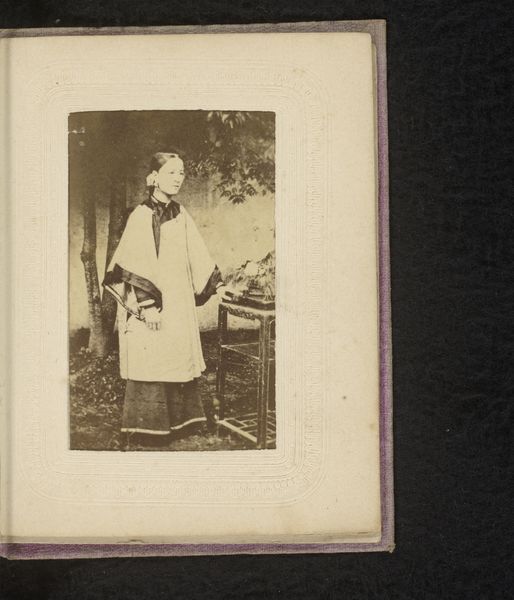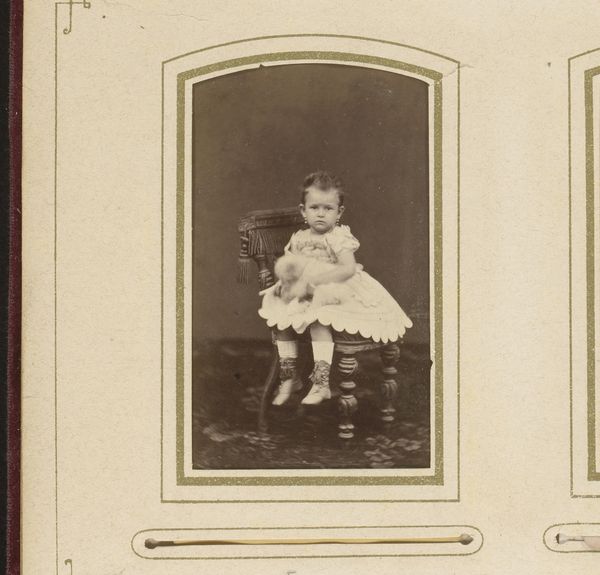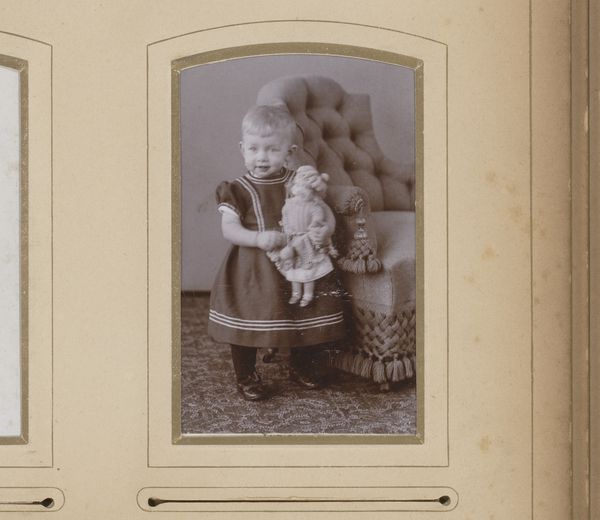
photography, gelatin-silver-print
#
portrait
#
photography
#
historical photography
#
gelatin-silver-print
#
genre-painting
Dimensions: height 89 mm, width 52 mm
Copyright: Rijks Museum: Open Domain
Editor: This gelatin-silver print, "Portret van een zittend meisje met muts," or "Portrait of a Seated Girl with Bonnet," made sometime between 1860 and 1870 by Edward Sims, strikes me as formal, even a bit stiff. She looks rather uncomfortable! What do you notice about the social context of this image? Curator: The formality you observe is key. In the mid-19th century, photography was still relatively new and expensive, primarily accessible to the middle and upper classes. These portraits served less as candid snapshots and more as carefully constructed representations of social standing. How does the framing—the decorative mount— contribute to that formality? Editor: It definitely makes it feel even more posed and deliberate, not just a quick picture. Almost like a framed painting! Curator: Precisely! This elevates the photograph, mimicking the conventions of fine art portraiture of the time. Notice how the child is dressed, and how she is posed, seated on a chair of that period. What do these details communicate? Editor: It signals wealth, doesn't it? That distinctive bonnet and elaborate dress wouldn’t have been everyday wear, right? They look more like status symbols than comfortable clothes. It makes me wonder if she had any say in how she was being represented. Curator: Exactly. Children’s portraiture then wasn’t just about capturing likeness; it was also about performing social roles, adhering to codes of conduct, and projecting a family's image. Who decided how she sat, where the light hit? What stories do you think such images suppressed? Editor: It's eye-opening to think about how much power dynamics were at play, even in something seemingly simple like a child's portrait! I never considered the politics of imagery this way. Curator: Every picture tells a story, and the stories not told are just as important. I'm glad this perspective helps frame our understanding of photography’s broader role.
Comments
No comments
Be the first to comment and join the conversation on the ultimate creative platform.
